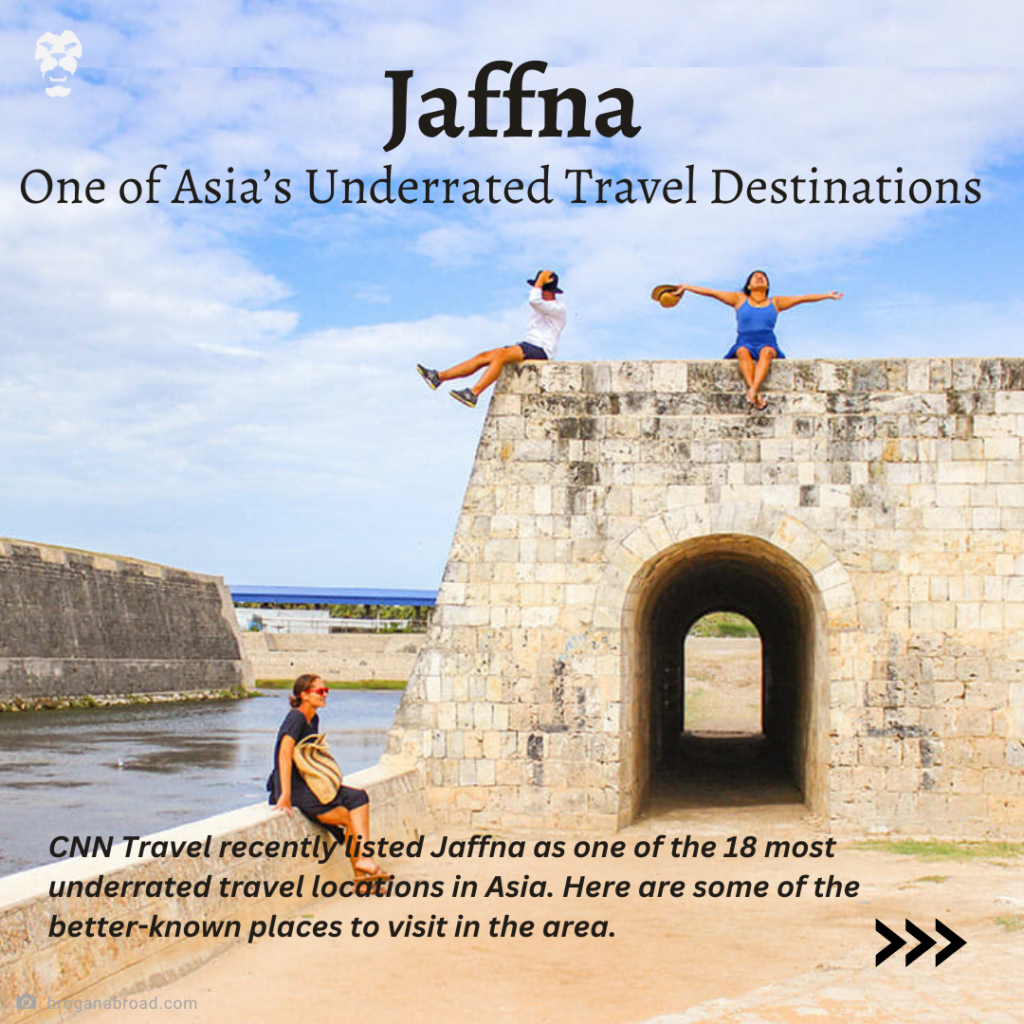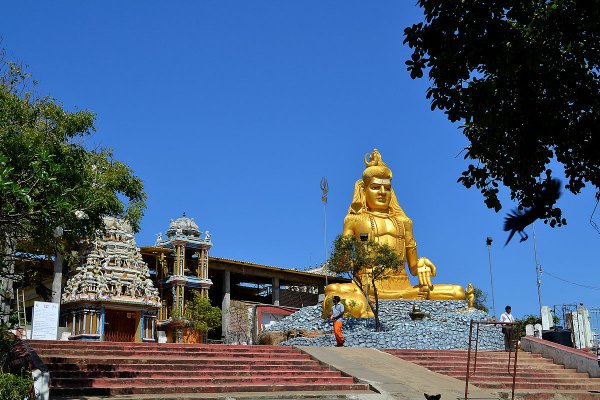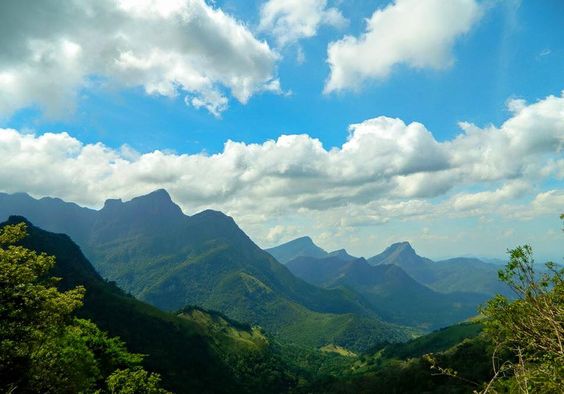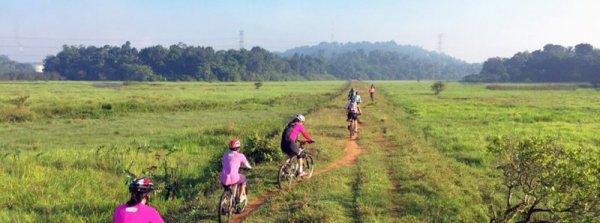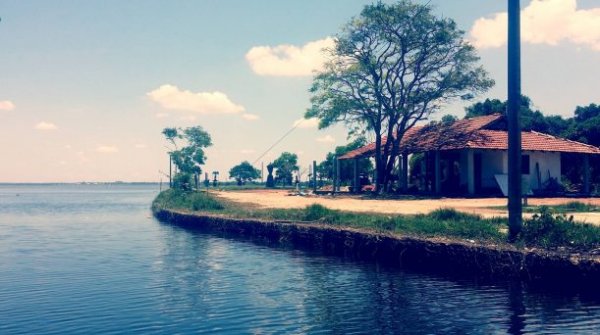
For a miniscule country dotting the Indian Ocean, Sri Lanka’s stories—the myths, legends, and urban histories intertwined with factual history—stand tall.
From Adam’s Peak to the legendary Ravana caves, from Ritigala to Jungle Beach—the mountains, forests, and beaches are all dipped in local folklore.
Sometimes, it’s the origin stories that make a place worth visiting. Ussangoda is one such place.
The Place

Hard red soil bordered by scrub forests and interspersed with dry plant life. This is one of Ussangoda’s unique features. Image courtesy Dhammika Heenpella, flickr.com
At 349 hectares, Ussangoda is one of the smaller (and relatively newer) national parks we have. Protected by the Department of Wildlife Conservation and declared a national park in 2010, the arid, windswept area is home to a few herds of timid deer and rabbits. Scrub forests surround it, and you get some flat vegetation clinging tightly to the ground, albeit in rather sparse quantities. Most of the park consists of ferric plains and, as it veers towards the sea, ragged cliffs dotted with cacti and other prickly shrub.
The Myth
There is a parking lot just before the entrance to the park, with a line of stalls selling piping hot belimal tea, wadai, and rotti on one side. Spend a few minutes talking to the women overseeing them and you will be regaled with tales of how, over 2000 years ago, a meteorite came crashing down. The fiery rock full of iron and other minerals is the reason for the semi-barren red landscape, they say.
-
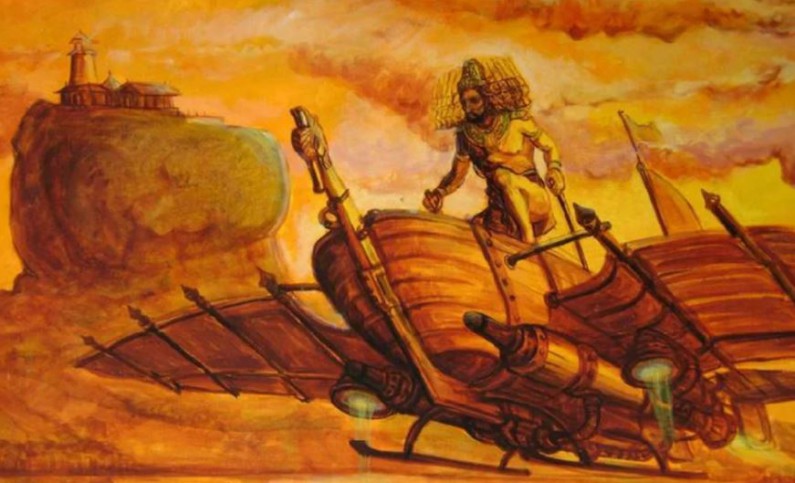
The dandu monara wimana – also known as the flying chariot in the shape of a peacock – used by Ravana is said to have had six airports. Ussangoda was one. Image courtesy: slguardian.org
They’d also tell you that this very spot was the landing grounds for King Ravana’s flying chariot. One of the other anecdotal reasons for the barren reddishness is that Hanuman provoked Ravana, who in turn set Hanuman’s tail on fire. Lord Hanuman then proceeded to wreak havoc and avenge himself by setting parts of King Ravana’s lands on fire, thereby devastating Ussangoda and leaving it in the state which we find now.
Another less popular account is that this is where betel leaves were first introduced or discovered in the island; and that the hue is what resulted from the resulting crimson spittle being sprayed indiscriminately over the ground.
The Science
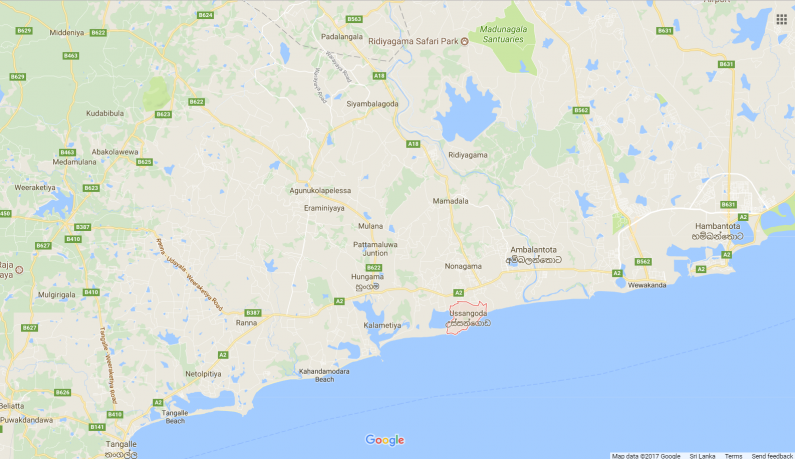
Less exciting but no less fascinating are the actual reasons for the landscape’s ferrous and infertile existence: Ussangoda is a serpentine site.
The term serpentine in this particular context is used to describe a large group of minerals with a high concentration of heavy metals, often combined with much lower amounts of calcium. It also means that the heavy metals in the soil’s composition is not very conducive to plant life.

This is the type of vegetation which can survive the harsh mineral conditions of the plains. Image courtesy medium.com/@inguruplaintea
The two contrasting varieties of greenery in the area are the prostrate ones on the plains, and the patches of shrubs here and there, including the scrub forest surrounding it. The vegetation which has evolved enough to survive on the plains are observed to be ‘prostrate and stunted, with an extensive root system’; whereas the scrub forest and shrubbery around the plains are where the land is similar to that of a non-serpentine soil, which also has much higher levels of moisture.
Basically, there is less moisture and higher mineral content in the areas with stunted plant growth, and vice versa.
Despite being less popular and photogenic than the likes of Yala, Wilpattu, and other national parks abundant in vegetation and wildlife, Ussangoda has a surreal and dystopian beauty of its own. It looks and feels abandoned, what with a lone signboard indicating where you could purchase entrance tickets from, sans an issuing counter, prices, or even relevant officials. Chatting to the tea-and-snack sellers there, we learnt that there were grand plans to reconstruct the area and promote the park as a tourist spot; however, these plans fell apart as the government changed hands and the park itself was abandoned. There are a few eco lodges (like Back of Beyond), smaller bungalows and hotels in the surrounding villages, with the largest being Shangri-La’s Golf Resort and Spa over at Hambantota. Getting there by public transport is relatively easy albeit extremely tiring as it’s about five hours or so away: just hop into a Hambantota bus from Fort, and then get off at the Nonagama Junction. Get a three-wheeler from there to the park, which is about three kilometres away from the main road.
Save for the few vendors with their makeshift stalls, a handful of visitors and the plastic remnants which follow them, the place is uncrowded, desolate, and perfect in its isolation.

